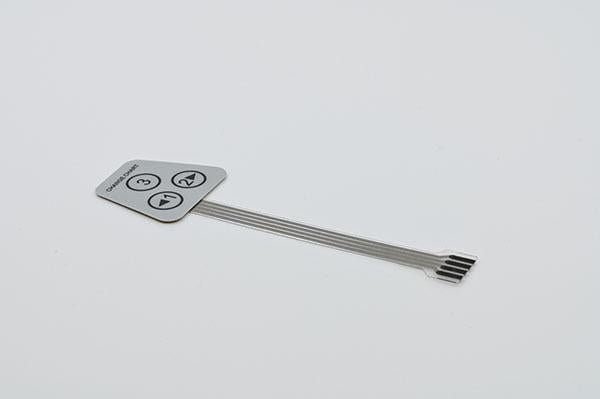Just How Membrane Layer Switches Add To the Longevity of Electronic Control Panels
Membrane buttons play an important duty in enhancing the toughness of electronic control panels, mostly via their multi-layered building and construction which offers effective security versus ecological factors such as moisture and dirt. The absence of relocating parts significantly lowers the chance of mechanical failings, making membrane layer changes ideal for demanding applications.
Interpretation of Membrane Layer Switches

Membrane switches are developed to be thin and lightweight, making them ideal for applications where space is restricted. They can be produced in different forms, sizes, and colors, providing adaptability in style that fulfills visual and functional needs. Additionally, membrane switches can incorporate various innovations, such as tactile responses and LED indications, improving customer experience.
Due to their construction, membrane switches are commonly immune to dirt, moisture, and basic wear, adding to their sturdiness popular atmospheres. Their seamless design not only helps with easy cleansing but additionally reduces the danger of mechanical failure, making them a preferred option for makers seeking dependable individual interfaces in their electronic control panels.
Security Against Environmental Aspects
The layout of membrane layer switches inherently provides a level of defense against numerous ecological variables, which is essential for preserving capability in tough problems - Membrane Switch. These buttons are typically constructed with layers of adaptable products that shield inner elements from dampness, dirt, and impurities. By enveloping the circuitry, membrane switches minimize the threat of brief circuits and corrosion, which can significantly hinder performance
Furthermore, the use of robust adhesives and sealants during production boosts their resistance to ecological challenges. Membrane layer buttons can endure direct exposure to chemicals and solvents, making them ideal for markets such as food handling and health care, where hygiene and sanitation are extremely important. Their smooth surface design also stops the buildup of dirt and bacteria, promoting easier cleansing and upkeep.
Temperature level changes are an additional environmental problem, and membrane layer switches are crafted to function efficiently throughout a wide variety of temperatures (Membrane Switch). This flexibility ensures that control board stay operational in numerous settings, from commercial settings to consumer electronic devices
Influence On User Interaction
Individual communication with electronic control board is substantially affected by the layout and performance of membrane buttons. These switches give a tactile user interface that enhances the total individual experience, enabling instinctive navigation and control. Their responsive nature ensures that customers obtain instant responses upon activation, which is crucial for jobs requiring precision and performance.
In addition, the smooth surface of membrane layer changes helps with get more easy cleaning and maintenance, advertising customer confidence in the reliability of the interface. This sanitation is specifically vital in settings where health is paramount, such as medical or food handling settings. Additionally, the compact and light-weight layout of membrane layer switches contributes to the aesthetic charm of control board, motivating user interaction via a modern and sleek look.
Additionally, the assimilation of visual components, such as published symbols and backlighting, helps customers swiftly identify functions, reducing the learning contour related to new devices. Therefore, customers can run gadgets better, bring about enhanced efficiency and satisfaction. In summary, membrane layer switches play a critical function in boosting individual communication by incorporating performance, aesthetic appeals, and convenience of usage, eventually causing boosted functional performance.
Layout Adaptability and Personalization
Design adaptability and modification are necessary facets of membrane layer buttons, enabling producers to customize digital control panels to specific applications and customer demands. This versatility enables for the combination of different design elements, such as colors, graphics, and structures, which can enhance the aesthetic appeal and customer engagement of the control panel.
Membrane switches can be personalized in dimension and form, fitting a large range that site of gadgets and applications, from commercial equipment to consumer electronics. This convenience guarantees that suppliers can develop user-friendly user interfaces that line up with individual expectations and operational needs. In addition, the capability to integrate unique features such as backlighting or tactile comments additionally enhances use, enabling a more interactive experience.
Furthermore, the manufacturing process for membrane layer changes sustains the rapid prototyping of designs, allowing producers to iterate and improve their concepts quickly. This ability not only increases the growth timeline however likewise ensures that the end product fulfills certain functional and visual criteria.

Cost-Effectiveness and Longevity
Cost-effectiveness and durability are significant benefits of membrane layer switches, making them an attractive choice for producers and end-users alike. These switches are generally Check This Out less costly to generate than traditional mechanical switches, mainly due to their streamlined production procedures and the lowered number of parts needed. This price benefit expands not just to first production however likewise to long-term functional expenditures, as membrane layer buttons commonly require much less maintenance and have a reduced failure price.
Moreover, the durability of membrane layer changes adds to their overall worth. Created from resilient materials, they are resistant to environmental elements such as moisture, dust, and chemicals, which can result in premature wear in other switch kinds. The absence of moving parts lessens mechanical failing, enabling membrane switches to maintain functionality over expanded periods.
This toughness is specifically valuable in applications requiring constant efficiency under requiring conditions, such as medical tools and industrial equipment. Ultimately, the mix of cost-effectiveness and durability makes membrane switches over a financially viable selection for suppliers, giving reliable remedies that hold up against the test of time while enhancing monetary factors to consider.
Verdict
Finally, membrane layer buttons substantially enhance the longevity of digital control panels through their robust construction and protective features. By successfully shielding wiring from ecological threats and reducing the threat of mechanical failing, these switches guarantee consistent efficiency sought after applications. The smooth layout advertises hygiene and convenience of upkeep, while customization alternatives enable tailored services for different demands. In general, membrane layer switches over represent a dependable and affordable choice for boosting the longevity and functionality of electronic control systems.